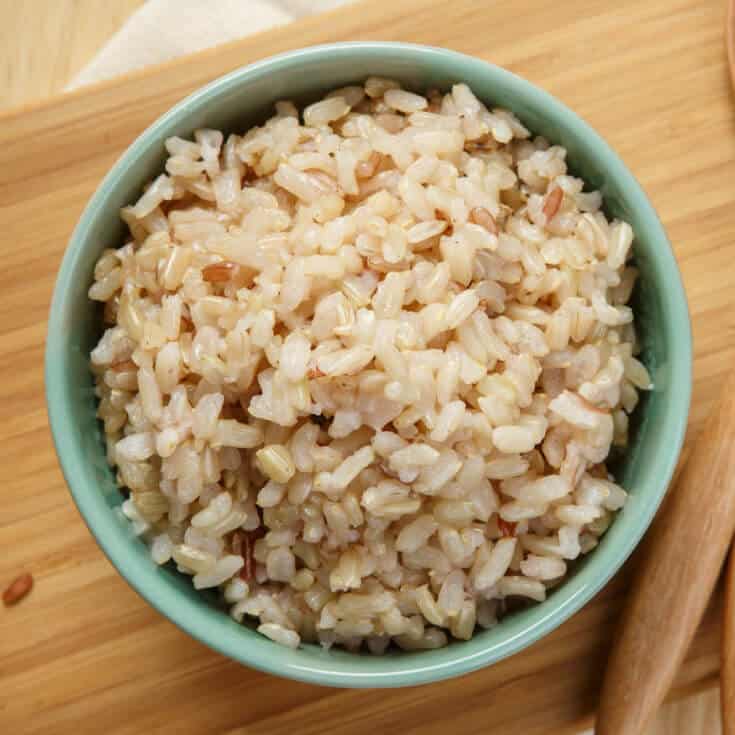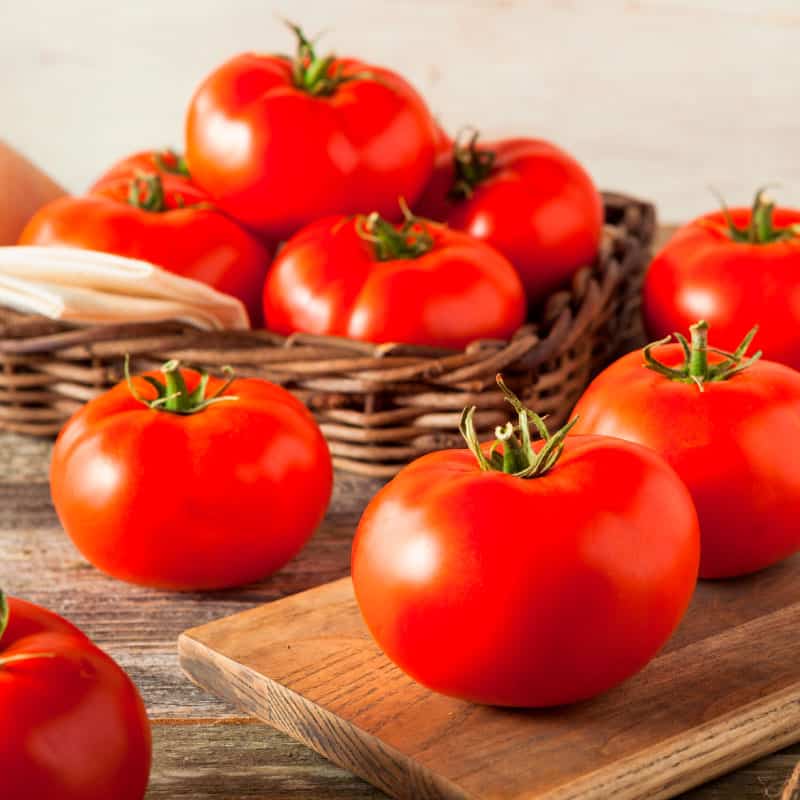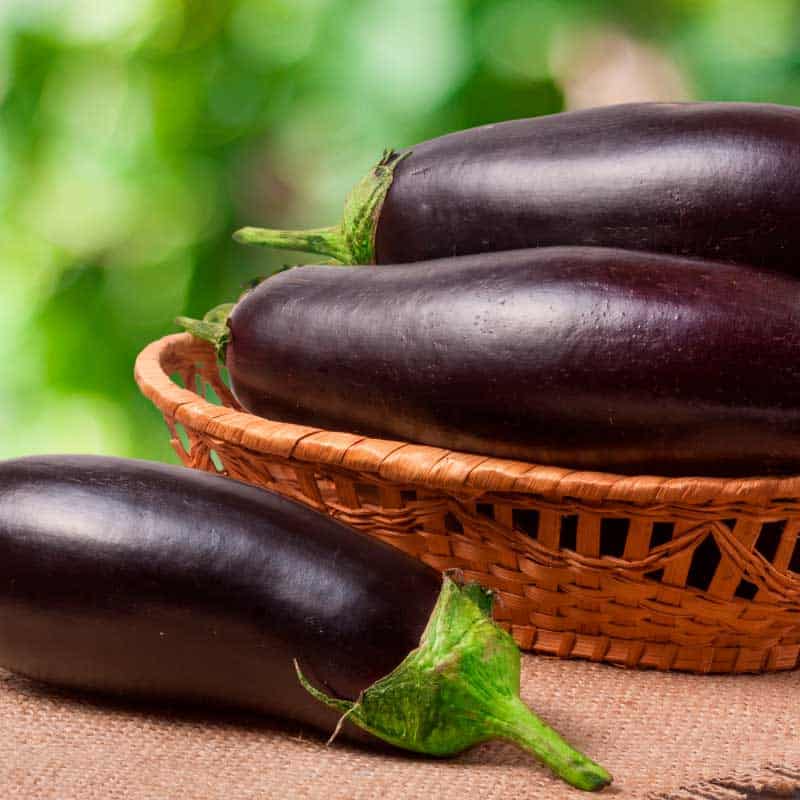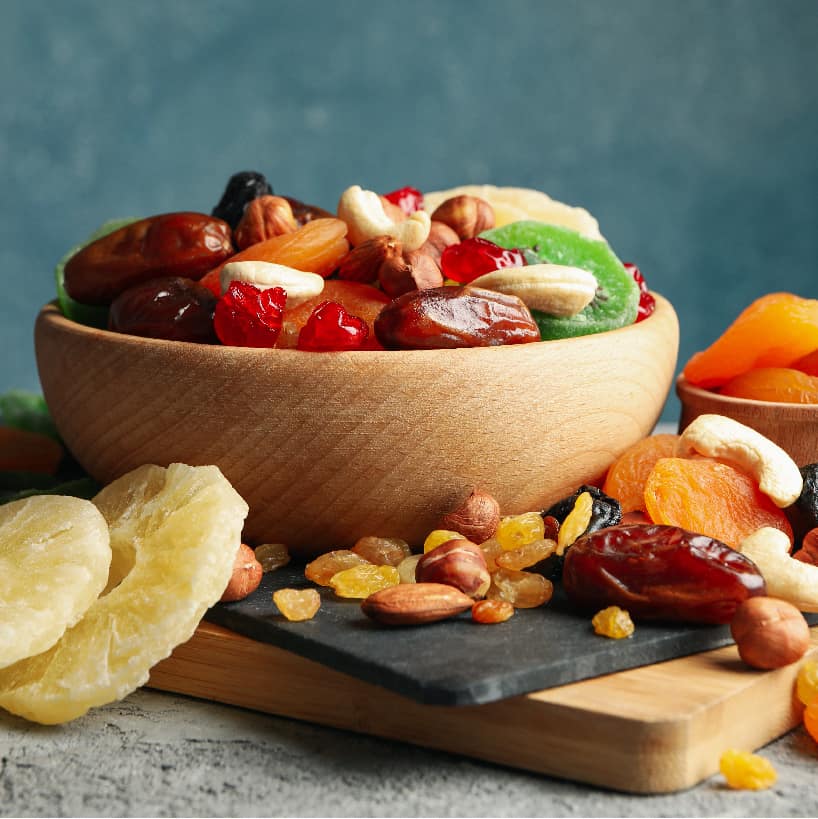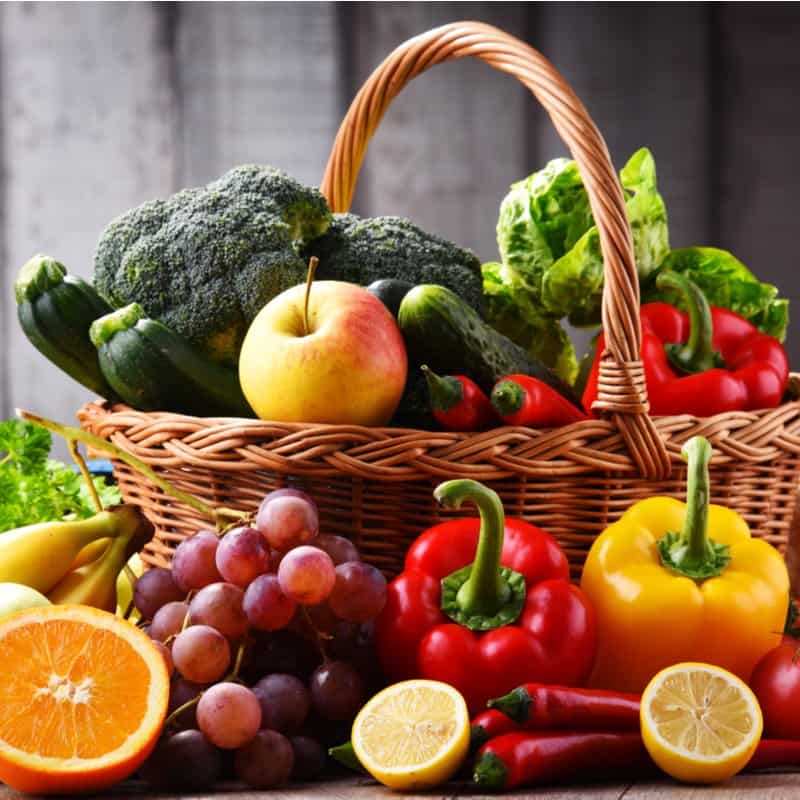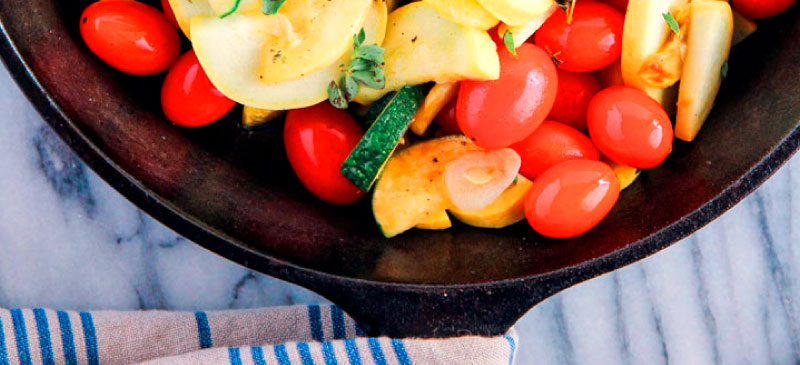This Dr. Axe content is medically reviewed or fact checked to ensure factually accurate information.
With strict editorial sourcing guidelines, we only link to academic research institutions, reputable media sites and, when research is available, medically peer-reviewed studies. Note that the numbers in parentheses (1, 2, etc.) are clickable links to these studies.
The information in our articles is NOT intended to replace a one-on-one relationship with a qualified health care professional and is not intended as medical advice.
This article is based on scientific evidence, written by experts and fact checked by our trained editorial staff. Note that the numbers in parentheses (1, 2, etc.) are clickable links to medically peer-reviewed studies.
Our team includes licensed nutritionists and dietitians, certified health education specialists, as well as certified strength and conditioning specialists, personal trainers and corrective exercise specialists. Our team aims to be not only thorough with its research, but also objective and unbiased.
The information in our articles is NOT intended to replace a one-on-one relationship with a qualified health care professional and is not intended as medical advice.
September Produce: Guide to Seasonal Vegetables and Fruits
August 31, 2024

As summer transitions into fall, September brings a bounty of fresh produce that’s perfect for both refreshing summer salads and hearty autumn dishes. This month offers an abundance of vegetables and fruits at their peak, perfect for creating delicious and nutritious meals.
Eating seasonal fruits and vegetables not only supports local farmers, but also ensures you’re getting the most nutrient-rich and flavorful produce.
In this guide, we’ll explore the top vegetables and fruits in season during September, along with their health benefits and ways to incorporate them into your meals.
September Vegetables in Season
1. Tomatoes
Juicy and versatile, tomatoes are a staple in many dishes. Rich in lycopene, vitamins A and C, and antioxidants, tomatoes support heart health and may reduce the risk of certain cancers.
How to use: Enjoy raw in salads, blend into sauces or roast for a rich flavor.
Use them to make:
2. Bell peppers
Available in various colors, bell peppers add a sweet, crisp flavor to dishes. High in vitamin C, they boost immunity and support skin health.
How to use: Eat raw in salads, grill, or stuff and bake.
Bell peppers are versatile in both raw and cooked dishes. Slice them for crudités, stuff them with rice and herbs, or roast them for a sweet, smoky flavor.
Try them in:
- Turkey-Stuffed Bell Peppers, Quinoa Stuffed Peppers, or Beef and Quinoa Stuffed Bell Peppers
- Stuffed Peppers with Rice
- Chicken Fajitas
3. Cucumbers
Refreshing and hydrating, cucumbers are perfect for cooling dishes. Low in calories, they promote hydration and aid in digestion.
How to use: Slice into salads, pickle or blend into smoothies.
Cucumbers are perfect for salads, sandwiches and pickles. Try them in a refreshing gazpacho or the following recipes:
4. Zucchini
A summer squash with a mild flavor, zucchini is versatile in many dishes. Low in calories and high in vitamin C and potassium, it supports heart health.
How to use: Grill, spiralize into noodles or bake into breads.
Zucchini can be grilled, stuffed or spiralized into noodles. Try it in fritters or quick breads, or in the following recipes:
- Zucchini Noodle Recipes
- Paleo Zucchini Brownies with Dark Chocolate Chips
- Zucchini Pizza Boats
- Zucchini Lasagna
- Gluten-Free Chocolate Chip Zucchini Bread
5. Eggplant
Eggplant has a slightly bitter taste and a meaty texture. Rich in fiber and antioxidants, it supports digestion and may reduce the risk of heart disease.
How to use: Grill, roast or use in casseroles like eggplant parmesan, ratatouille and baba ganoush. Try these other eggplant recipes as well.
6. Green beans
Crisp and tender, green beans are a classic side dish. High in fiber and vitamins A, C and K, they support bone health and digestion.
How to use: Steam, sauté or add to casseroles.
Green beans can be steamed, sautéed or roasted. Try them in a classic Niçoise salad or other healthy green bean recipes.
7. Sweet corn
Sweet and crunchy, corn is a summer favorite that extends into September. High in fiber, vitamins B and C, and antioxidants, it promotes eye health and digestion.
How to use: Grill on the cob, add to salads, or use in soups and salsas. Here a few more corn recipes to try:
8. Spinach
Spinach is a leafy green known for its mild flavor and versatility. Packed with iron, calcium, and vitamins A, C and K, it supports bone and eye health.
How to use: Eat raw in salads, sauté or blend into smoothies.
Spinach is great raw in salads or sautéed as a side. Use it in omelets, pasta dishes or smoothies, or try the following recipes:
9. Kale
Kale is a nutrient-dense leafy green with a slightly bitter taste. High in vitamins A, C and K, it supports heart health and bone strength.
How to use: Massage for salads, bake into chips or sauté with garlic. There are so many kale recipes to choose from.
10. Broccoli
Broccoli is a cruciferous vegetable with a slightly bitter taste. Rich in fiber, vitamins C and K, and folate, it supports immune function and bone health.
How to use: Steam, roast or blend into soups. You can also eat raw broccoli, of course.
Try it in stir-fries or pureed into a creamy soup, among other broccoli recipes.
11. Cauliflower
Cauliflower has a mild flavor and can be used as a low-carb alternative in many dishes. High in fiber, vitamins C and K, and antioxidants, it supports digestion and may reduce the risk of chronic diseases.
How to use: Roast, mash or use as a rice substitute.
It can be roasted whole, riced for a low-carb alternative or pureed into a creamy soup, and there many more cauliflower recipes to choose from.
12. Brussels sprouts
These mini cabbages have a slightly bitter taste and a dense texture. Packed with fiber, vitamins C and K, and antioxidants, Brussels sprouts promote heart health and digestion.
How to se: Roast with olive oil, steam or sauté with bacon.
Roast them with olive oil and garlic, or shred them raw for a crunchy slaw. Here are some other ways to use them:
13. Carrots
Carrots are sweet and crunchy root vegetables. High in beta-carotene, fiber and vitamin K, they support eye health and digestion.
How to use: Eat raw as a snack, roast or blend into soups.
Carrots are delicious raw as a snack or roasted with honey for a caramelized treat. Grate them into salads, or bake them into muffins.
You can also make:
- Maple Glazed Rosemary Carrots
- Carrot Cake Cupcakes
- Raw Superfood Carrot Salad
- Carrot Ginger Soup
- Carrot Apple Salad
14. Beets
Beets have an earthy flavor and vibrant color. Rich in folate, manganese, fiber and antioxidants, they support heart health and may reduce inflammation.
How to use: Roast, pickle, grate raw into salads or blend into smoothies. Their earthy sweetness pairs well with goat cheese and walnuts.
Try the following beet recipes:
15. Leeks
Leeks have a mild onion flavor and a tender texture. High in fiber and vitamins A and K, they support heart health and digestion.
How to use: Sauté for soups, roast or add to quiches. They also can be braised as a side dish.
Try this Potato Leek Soup.
16. Cabbage
Cabbage is a versatile leafy vegetable with a slightly bitter taste. Rich in fiber, vitamins C and K, and antioxidants, it supports digestion and immune function.
How to use: Eat raw in slaws, ferment into sauerkraut or sauté. Try it sautéed with apples for a tasty side dish, or make one of the following recipes:
17. Celery
Celery is a crisp vegetable with a mild, refreshing flavor. Low in calories and high in fiber, it supports hydration and digestion.
How to use: Eat raw as a snack, add to salads or use in soups.
Celery is great raw with dips or cooked in soups and stews. Try it braised as a side dish.
Use it in:
18. Parsnips
Parsnips are a sweet, nutty root vegetable. High in fiber, vitamins C and K, and folate, they support digestion and immune health.
How to use: Roast, mash, or add to stews and soups.
Try them in a root vegetable gratin or the following dishes:
19. Sweet potatoes
Sweet potatoes are a starchy root vegetable with a sweet flavor. Packed with beta-carotene, fiber, and vitamins A and C, they support eye health and immune function.
How to use: Bake, mash, or roast for a side dish. Sweet potatoes can be used in pies and quick breads as well, and there are plenty of other sweet potato recipes to try.
20. Pumpkin
Pumpkin is a fall favorite with a mildly sweet flavor. Rich in beta-carotene, fiber and vitamin A, it supports eye health and immune function.
How to use: Pumpkin isn’t just for pie. Roast it for soups, use it in risottos or puree it for baked goods.
Try these 45 pumpkin recipes.
21. Butternut squash
Butternut squash is a sweet, nutty winter squash. High in fiber, vitamins A and C, and potassium, it supports heart health and digestion.
How to use: Roast, puree for soups or add to casseroles. Butternut squash makes a velvety soup or a sweet addition to risottos and pasta dishes.
Try these butternut squash recipes.
22. Acorn squash
While its peak season really begins in October, acorn squash is a small, sweet squash with a nutty flavor that’s actually available year-round. Rich in fiber, vitamins A and C, and potassium, it supports heart health and digestion.
How to use: You can roast, stuff or mash as a side dish. For instance, roast it with butter and cinnamon for a comforting side dish, or stuff it with quinoa and vegetables for a hearty main course, among other acorn squash recipes.
23. Spaghetti squash
Spaghetti squash has a mild flavor and a unique stringy texture that resembles spaghetti when cooked. Low in calories and high in fiber, it supports digestion and weight management.
How to use: Roast and use as a pasta substitute, or bake with sauces. Try these spaghetti squash recipes.
24. Peas
Peas are sweet and tender legumes. High in fiber, vitamins A and C, and protein, they support digestion and muscle health.
How to use: Eat raw in salads, steam or add to soups.
Try:
25. Artichokes
Artichokes have a slightly bitter taste and a tender texture. High in fiber, vitamins C and K, and antioxidants, they support liver health and digestion.
How to use: You can steam, roast or add to dips.
Steam and serve them with melted butter or grilled for a smoky flavor. Try them in dips or as a pizza topping.
They also work well in the following recipes:
26. Radishes
Radishes are crisp and peppery root vegetables. Low in calories and high in vitamin C, they support immune function and digestion.
How to use: Eat raw in salads, pickle or roast for a milder flavor. Try them in:
27. Turnips
Turnips are a slightly bitter root vegetable with a crunchy texture. High in fiber, vitamins C and K, and potassium, turnips support heart health and digestion.
How to use: Roast, mash or add to stews, or make Turnip Fries.
28. Onions
Onions are pungent, versatile vegetables used in a variety of dishes. Rich in antioxidants and sulfur compounds, they support heart health and immune function.
How to use: Sauté, caramelize or add raw to salads or salsas. Onions are essential in many cuisines, as you can see in the following recipes:
29. Garlic
Garlic is a pungent, aromatic bulb with a strong flavor. High in sulfur compounds, it supports heart health and immune function and has anti-inflammatory properties.
How to use: Mince for sauces, roast or use in dressings.
Known for its immune-boosting properties, garlic adds flavor to countless dishes. Roast whole bulbs for a mellow, spreadable treat.
Try:
- Garlic Breadsticks
- Garlic Lemon Chicken
- Garlic Aioli
- Guiltless Garlic Parmesan Wings
- Garlic Baked Chicken
30. Shallots
Shallots are a milder, sweeter relative of onions. Rich in antioxidants and sulfur compounds, they support heart health and immune function.
How to use: Mince for sauces, caramelize or use in dressings.
Use them to make:
31. Swiss chard
Swiss chard is a leafy green vegetable with vibrant stalks. High in vitamins A, C and K, as well as minerals like magnesium, it supports bone health and reduces inflammation.
How to use: Sauté, add to soups or use raw in salads. Try them in this Chard Greens Recipe.
32. Hot peppers
Hot peppers range in heat levels and add spice to dishes. Rich in capsaicin, they support metabolism and may help reduce pain.
How to use: Add to salsas, sauces or pickles.
Use hot peppers to make:
33. Celery root
Celery root, or celeriac, is a knobby root vegetable with a mild, celery-like flavor. High in fiber, vitamin K and antioxidants, it supports digestion and bone health.
How to use: Roast, mash, or add to soups and stews.
34. Arugula
Arugula is a peppery, leafy green often used in salads. Rich in vitamins A, C and K and calcium, it supports eye health and boosts the immune system.
How to use: Use raw in salads, add to sandwiches or blend into pesto. Lightly sauté it as a bed for grilled meats, or try the following recipes:
35. Lettuce
Lettuce is a leafy green with a mild flavor, commonly used in salads. High in water content and vitamins A and K, it supports hydration and bone health.
How to use: Use raw in salads, wraps or sandwiches.
Various types of lettuce provide different nutrients. Use them in salads, wraps, or as a bed for grilled meats and fish.
36. Mushrooms
Mushrooms are a versatile fungi with an earthy flavor. Rich in antioxidants, B vitamins and minerals like selenium, they support immune function and brain health.
How to use: Sauté, grill, or add to soups and stews.
Mushrooms add umami flavor to dishes. Sauté them, stuff them, or use them in risottos and pasta.
Try them in:
37. Okra
Okra is a green pod vegetable with a mild flavor and mucilaginous texture. High in fiber, vitamins C and K, and antioxidants, it supports digestion and heart health.
How to use: Sauté, fry, or add to soups and stews.
Okra can be grilled, fried or used in gumbo. Try it pickled for a tangy snack.
Use it in:
38. Potatoes
Potatoes are starchy tubers available in various colors and textures. Rich in potassium, vitamin C and fiber, they support heart health and provide energy.
How to use: Roast, mash, or use in soups and stews.
Potatoes are versatile. Use them in gratins and hash browns.
They go well in:
- Hungarian Chicken Paprikash
- Vegetable Beef Barley Soup
- Cheesy Potatoes Au Gratin with Yellow Squash and Zucchini
September Fruits in Season
1. Apples
Crisp and sweet, apples are a fall favorite. High in fiber, antioxidants and vitamin C, they support heart health and digestion.
How to use: Eat raw, bake into pies or add to salads.
Apples are perfect for snacking, baking or making into sauce. Try them in salads or paired with pork dishes.
And don’t forget apple desserts!
2. Pears
Pears are juicy and sweet with a soft texture. Rich in fiber and vitamins C and K, pears support heart health and digestion.
How to use: Eat raw, poach or bake into desserts.
Pears are great for snacking or poaching. Use them in salads, or bake them into tarts, among other pear recipes.
3. Grapes
Grapes are sweet and juicy, perfect for snacking. High in antioxidants and vitamins C and K, grapes support heart health and immune function.
How to use: Eat raw, freeze for a cool treat or add to salads. You also can roast them for a savory side dish, and you’ll surely want to try this Sweet & Savory Grape Jelly Meatballs Recipe.
4. Figs
Figs are sweet and chewy with a unique texture. High in fiber, potassium, vitamins A and K, and antioxidants, they support digestion and heart health.
How to use: Eat raw, add to salads or bake into desserts.
Figs are delicious fresh or dried. Stuff them with goat cheese, or use them in jams and baked goods.
Try these fig recipes.
5. Plums
Plums are juicy and sweet with a slightly tart skin. Rich in vitamin C and antioxidants, plums support immune function and skin health.
How to use: Eat raw, bake into crisps or blend into smoothies.
Plums are delicious fresh or baked into desserts. Try them grilled or in savory sauces.
6. Peaches
Peaches are sweet, juicy and fragrant. High in vitamins A and C, they support skin health and immune function.
How to use: Peaches are delicious fresh, grilled, or baked into cobblers and pies. Try them in salads or salsas.
Here are some peach recipes to try:
7. Nectarines
Similar to peaches but with smooth skin, nectarines are sweet and juicy. Rich in vitamins A and C, they support skin health and immune function.
How to use: Eat raw, add to salads or bake into desserts.
Nectarines are great for snacking or baking. Grill them for a caramelized treat.
8. Pawpaws
Pawpaws are tropical-like fruits with a custard texture. High in vitamins C and B6, along with antioxidants, they support immune function and skin health.
How to use: Eat raw, blend into smoothies or use in desserts.
9. Raspberries
Raspberries are sweet, tart and juicy. High in fiber, vitamin C and antioxidants, they support heart health and digestion.
How to use: Eat raw, add to yogurt or bake into muffins.
Raspberries are perfect for snacking or baking. Add them to yogurt, or use them in sauces.
Also try them in:
- Raspberry Vinaigrette
- Raspberry Smoothie
- Paleo Raspberry Linzer Cookies
- Lemon Raspberry Sorbet
- Chocolate Raspberry Crepes
10. Strawberries
Strawberries are sweet and juicy with a bright red color. Rich in vitamin C, fiber and antioxidants, they support heart health and immune function.
How to use: Eat raw, add to salads or blend into smoothies.
Strawberries are delicious fresh or in desserts. Try them in salads or as a topping for breakfast dishes.
You can also make the following strawberry recipes:
- Homemade Strawberry Lemonade (Naturally Sweetened)
- Strawberry Bread
- Strawberry Shortcake Cupcakes
- Strawberry Spinach Salad with Poppy Seed Dressing
- Strawberry Banana Smoothie
11. Watermelon
Watermelon is refreshing and hydrating with a sweet flavor. High in water content, vitamin C and antioxidants like lycopene, it supports hydration and skin health.
How to use: Eat raw, blend into smoothies or add to salads.
Watermelon is refreshing on its own or in fruit salads. Try it grilled or in a savory salad with feta, along with the following recipes:
- Watermelon Agua Fresca
- Watermelon Feta Salad
- Mint Watermelon Salad
- Watermelon Salad with Rosemary & Yogurt
- Hydrating Watermelon Smoothie Recipe with Strawberries and Banana
12. Cantaloupe
Cantaloupe is a sweet, orange-fleshed melon. Rich in vitamins A and C, it supports skin health and immune function.
How to use: Eat raw, blend into smoothies or add to fruit salads.
Cantaloupe is refreshing on its own or in fruit salads. Wrap it with prosciutto for a classic appetizer, or make this Cold Melon Berry Soup.
13. Honeydew melon
Honeydew is a sweet, green-fleshed melon. High in vitamins C and B6 and low in calories, it supports immune function and skin health.
How to use: Eat raw, blend into smoothies or add to fruit salads. Try it wrapped with prosciutto.
14. Persimmons
Persimmons are sweet, orange fruits with a honey-like flavor. Rich in vitamins A and C, they support eye health and immune function.
How to use: Eat raw, add to salads or bake into desserts.
15. Cranberries
Cranberries are tart, bright red berries often used in fall dishes. High in vitamin C and antioxidants, they support urinary tract health and immune function.
How to use: Eat raw, dry for snacks or use in sauces. There is no shortage of cranberry recipes to try.
16. Pomegranates
Pomegranates are sweet, tart fruits filled with juicy seeds. Rich in antioxidants and vitamins C and K, pomegranates support heart health and immune function.
How to use: Eat the seeds raw, add to salads or juice.
Pomegranate seeds add crunch to salads and desserts. Use their juice in sauces or cocktails, or make a Beet Pomegranate Salad.
17. Kiwi
Kiwi is a sweet, tart fruit with a fuzzy skin and green flesh. High in vitamin C, fiber and antioxidants, kiwi supports immune function and digestion.
How to use: Eat raw, add to salads or blend into smoothies.
Kiwi is delicious on its own or in fruit salads. Try it in smoothies — such as this Strawberry Kiwi Smoothie Recipe — or as a garnish for desserts.
18. Blueberries
Blueberries are sweet, tart and packed with nutrients. High in antioxidants, fiber, and vitamins C and K, they support heart health and brain function.
How to use: Eat raw, add to yogurt or bake into muffins.
Try the following blueberry recipes:
19. Blackberries
Blackberries are juicy, sweet and slightly tart. Rich in vitamins C and K, fiber, and antioxidants, they support heart health and digestion.
How to use: Eat raw, add to yogurt or bake into pies.
Blackberries are delicious fresh or baked into cobblers and pies. Add them to yogurt or smoothies.
Make:
20. Grapefruit
Grapefruit is a tart, juicy citrus fruit with a slightly bitter taste. Loaded with vitamin C, fiber and antioxidants, it supports immune function and weight management.
How to use: Eat raw, juice or add to salads.
21. Pineapple
Pineapple is a tropical fruit with a sweet and tangy flavor. High in vitamin C and bromelain, it supports digestion and immune function.
How to use: Eat raw, blend into smoothies or grill.
Here are some pineapple recipes to try:
- Refreshing Pineapple Smoothie with Cilantro
- Anti-Inflammatory Juice
- Sweet and Sour Chicken
- Piña Colada Smoothie
22. Key limes
Key limes are small, tart citrus fruits with a bright flavor. Rich in vitamin C and antioxidants, they support immune function and skin health.
How to use: Use in marinades, desserts or beverages. Use their juice in pies, marinades or cocktails, or make this Key Lime Pie Recipe.
23. Lemons
Lemons are bright yellow citrus fruits with a tangy flavor. High in vitamin C and antioxidants, they support immune function and digestion.
How to use: Use in dressings, beverages or desserts.
Lemons add brightness to many dishes. Use their juice in dressings, marinades or baked goods.
You can also try them in:
- Secret Detox Drink
- Gluten-Free Lemon Bars with Cranberries
- Lemon Cheesecake Bars
- Lemon Roasted Cauliflower
24. Limes
Limes are green citrus fruits with a tangy, slightly bitter flavor. Rich in vitamin C and antioxidants, they support immune function and skin health.
How to use: Limes are great in beverages, marinades and dressings. Use them to add zest to seafood dishes or in the following recipes:
- Thai Coconut Soup with Chicken & Ginger
- Blackened Salmon Recipe with Creamy Avocado Dressing
- Palak Paneer
25. Mango
Mango is a tropical fruit with a sweet, juicy flesh. High in vitamins A and C, mango supports skin health and immune function.
How to use: Eat raw, blend into smoothies or add to salsas.
Mangoes are delicious fresh or in salsas and chutneys. Try them grilled or in smoothies, or make the recipes below:
26. Oranges
Oranges are juicy, sweet citrus fruits known for their bright flavor. High in vitamin C, fiber and antioxidants, they support immune function and heart health.
How to use: Eat raw, juice or add to salads.
Oranges are perfect for juicing or eating fresh. Use their zest in baked goods or savory dishes.
Try these recipes:
Conclusion
- September is a month of transition, where summer’s bounty meets the harvest of fall. The variety of fresh produce available allows for endless culinary creativity while providing a host of health benefits.
- From hearty squashes to crisp apples, this month’s produce is perfect for transitioning from summer to fall flavors.
- By incorporating these seasonal vegetables and fruits into your diet, you can enjoy the best flavors and nutrition that nature has to offer.
- Whether you’re whipping up a light salad, grilling vegetables or baking a fruit-filled dessert, September’s produce will bring color and taste to your table.
- Embrace the season by incorporating these fresh, local ingredients into your cooking, and enjoy the health benefits and flavors they bring to your table.





